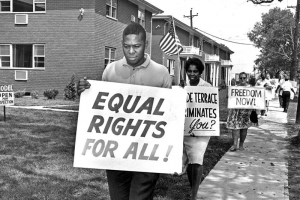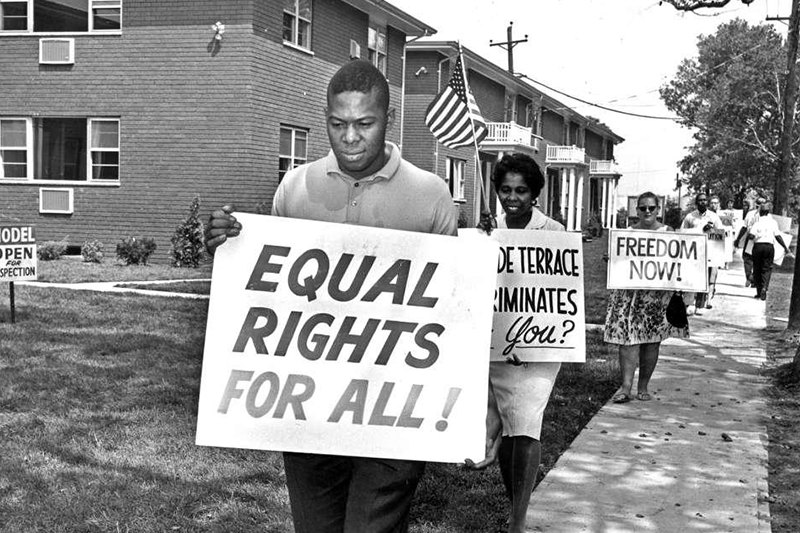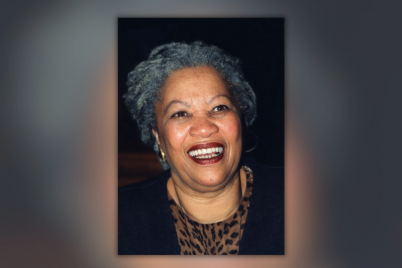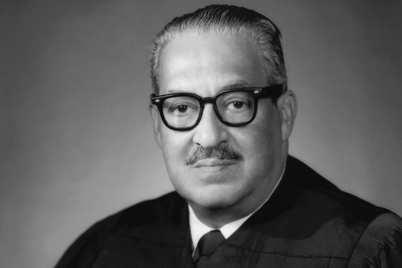BY JENNIFER GAMBLE-THEARD, M.ED., ASALH Historian
People of the African Diaspora have survived difficult obstacles in the Americas throughout the past four centuries. As a stolen and unwillingly transplanted people, we have accomplished numerous achievements and made remarkable contributions of many kinds in this land–the United States of America.
We have had to fight for and demand human rights, decency and respect. Our quest for acceptable and moral standards of behavior towards our community has been constant throughout the years.
African Americans have been evolving socially from slavery, emancipation, reconstruction, Jim Crow-era disenfranchisement and into the Civil Rights Movement. Although we can say that the fundamentals of the Civil Rights Movement span from 1866 to current times, the climax of concentrated efforts by African Americans occurred from the 1950s through the 1960s.
The Civil Rights Movement was and has been a quest for the right to be free from racial hate and discrimination. We pushed to attain equal opportunity in employment, housing, education, the right to free access to public facilities and especially the right to vote.
No other social or political movement of the 20th century has had such a profound effect on the legal and political institutions of the United States. The mid-1900s Civil Rights Movement was a pursuit by African Americans to restore the late 1800s Reconstruction/Civil War Amendments to the United States Constitution, which had been eroded and diminished by Jim Crow era laws in the South.
I was around during the height of that not so long ago history. Although I was young and didn’t fully understand the dynamics of the times, I totally understand it now!
Organized efforts by African Americans to gain their civil rights, as government protections and guarantees, actually began in 1909 when blacks and whites together formed the NAACP. It became the leading organization in the cause of civil rights for those who pursued freedom and opportunities.
From the beginning, NAACP attorneys challenged many discriminatory laws in court. With deliberate and persistent steps, by the 1950s the NAACP began to attack restrictive education and housing policies successfully and began to legally break apart the segregation barriers that had been established practices on trains and other forms of interstate transportation.
Brown v. Board of Education of Topeka established that racial segregation of children in public schools was unconstitutional. Most importantly, it was one of the cornerstones of the Civil Rights Movement.
After the federal courts ruled that segregation of public facilities was against the law of the nation, for the first time in United States history, discrimination in public recreational facilities was abolished in the South. African Americans could then take part in a variety of activities that they had been denied access to for decades.
Simple and natural activities for blacks such as swimming at God-given beaches or walking through city parks were finally protected legally. “Separate but Equal” was no longer considered a part of U.S. legal language in any state or region.
Another important factor that encouraged the widespread movement of civil rights as a gathered force was the return of the World War II black veterans from war. The war itself contributed to a push for freedom at home by those who had fought for their country in foreign lands.
Once the soldiers were back home in the United States, they explicitly resisted being treated like second-class citizens. The lynchings of black veterans in the South only made the movement for freedom and rights gain more strength and power.
Also known as the Freedom Movement or the Black Movement, the 50s, 60s and beginning of the 70s had the strongest, greatest and most organized campaign for African-American rights that the country had ever experienced. Many of the names of important historical figures and places or events that we associate with Black History month are connected to the height of the Civil Rights Movement:
- Martin Luther King, Jr. directed the nonviolent movement in quiet but defiant protest and civil disobedience, established the Southern Christian Leadership Conference (SCLC) and the March on Washington, which was a multicultural culminated people’s march where King made his “I have a dream” speech to 250,000 demonstrators gathered on the nation’s Mall.
- Rosa Parks refused to give up her bus seat to a white passenger as part of an organized demand for desegregation of public transportation.
- The Civil Rights Act of1957, the first federal civil rights legislation passes since 1875 that authorized the federal government to make legal measures to prevent citizens from being denied voting rights.
- Greensboro, N.C., student sit-ins to force the desegregation of lunch counters by means of civil disobedience in stores throughout the south. Eventually, the tactic included 70,000 black and white participants that resulted in the desegregation of local businesses.
- The SCLC under King’s guidance registered a black electorate in the South that increased voter registration fivefold.
- Student Nonviolent Coordinating Committee defied segregation on interstate buses, “freedom rides” in Alabama and Mississippi.
- Congress of Racial Equality organized local projects and registered black voters in Mississippi.
- James Farmer helped shape the Civil Rights Movement through nonviolent activism, which eventually broadened popular support for passage of the Civil Rights and Voting Rights Acts.
- Civil Rights Act of 1964 forbade discrimination in voting, public accommodations and employment and permitted the attorney general of the U.S. to deny funds to local agencies that practiced discrimination.
- The 24th Amendment to the Constitution in 1964 helped to increase voter registration and banned the use of poll taxes.
- In 1963 Birmingham, young black students were attacked by dogs, police with clubs, whips, tear gas and high-pressure water hose during a peaceful walk for racial justice.
- The 1965 Selma, Ala., event where thousands of civil rights demonstrators were met by police with clubs. Many were arrested for marching but won international sympathy.
- Voting Rights Act of 1965 was passed and eliminated all discriminatory qualifying tests for voter registrants and provided for the appointment of federal registrars.
There are so many more people, places and events that positively impacted the Civil Rights Movement, even perhaps someone who is reading this article. There are too many to mention here that helped to start the motion of much-needed positive changes to our system of government and way of life.
 Let’s keep the spirit of the Civil Rights Movement alive, and not take our rights for granted. “Black Lives Matter” can be interpreted as a form of civil rights expression. History tells us to be knowledgeable, vigilant and involved in some way about our civil rights.
Let’s keep the spirit of the Civil Rights Movement alive, and not take our rights for granted. “Black Lives Matter” can be interpreted as a form of civil rights expression. History tells us to be knowledgeable, vigilant and involved in some way about our civil rights.
We can make sure that we pay attention and VOTE for the right people, things or situations that could be instrumental in providing relevant and positive experiences for the good of the whole.
Jennifer Gamble-Theard, M.Ed. is a retired Pinellas County educator in the study of history and language. She is also the historian for the St. Petersburg Branch of ASALH.








